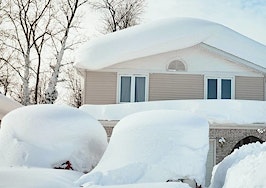- The American Academy of Pediatrics found that there were an estimated 98,415 children treated for falls from windows at emergency rooms in the United States from 1990-2008.
- New York and Boston have successfully implemented window safety programs that significantly reduced accidents.
- Property owners and managers should be proactive in understanding local regulations regarding window safety and implement programs that exceed minimum local requirements.
Every year, thousands of children fall out of windows and sustain serious injuries that cause hospitalization, permanent disability and even fatality.
The American Academy of Pediatrics found that there were an estimated 98,415 children treated for falls from windows at emergency rooms in the United States from 1990-2008. These numbers only represent ER visits and do not account for minor injuries treated with first aid or by pediatricians — or fatalities.
The number of child falls from windows has reached critical mass but thankfully can be prevented with common sense safety measures.
These unfortunate tragedies create liability claims or lawsuits for property managers, condominium boards or real estate owners who are legally connected to the property.
Residents may sue real estate entities for negligence, lack of or faulty safety devices, improper or broken locking mechanisms and other similar issues that might be the responsibility of the property manager or building owner. Settlements for these types of lawsuits can easily reach six figures or higher.
Some cities have passed laws requiring apartment and condominium buildings to have window safety devices in residential units. New York and Boston have successfully implemented window safety programs called “Children Can’t Fly” and “Kids Can’t Fly,” respectively.
Within 10 years, New York and Boston saw combined significant decreases in falls. However, pediatric falls remain high nationally, which could be attributed to the lack of country-wide window safety programs like those in New York and Boston.
Property owners and managers should be proactive in understanding local regulations regarding window safety and implement programs that exceed minimum local requirements. To assist property managers and owners with child fall prevention, we suggest the following:
- Consider implementing a window guard or window stop program in all residential units.
- Do not rely on screens for fall prevention; screens aren’t designed to withstand lateral forces.
- Do not permit residents to remove safety devices (consider screws that require a special tool to remove).
- With window stops, the window should not open more than four inches.
- To remove safety devices, require residents to sign a release that indicates there are no young children in the home and that the residents understand the fall hazards that they could be exposed to; always have contracts reviewed by legal counsel.
- Encourage residents to keep furniture away from windows.
- Do not place toys or other items that might draw a child’s attention on a windowsill.
When a child falls out of a window, especially one that is above ground level, the results can be tragic. However, this type of injury (and potential lawsuit) can easily be prevented by implementing a proactive safety program at your property.
Chris Dunlap, AVP, Risk Consultant and Real Estate Practice Leader at HUB International, provides risk management consulting services and carrier risk control oversight to commercial property and casualty clients. Connect with him on LinkedIn.








